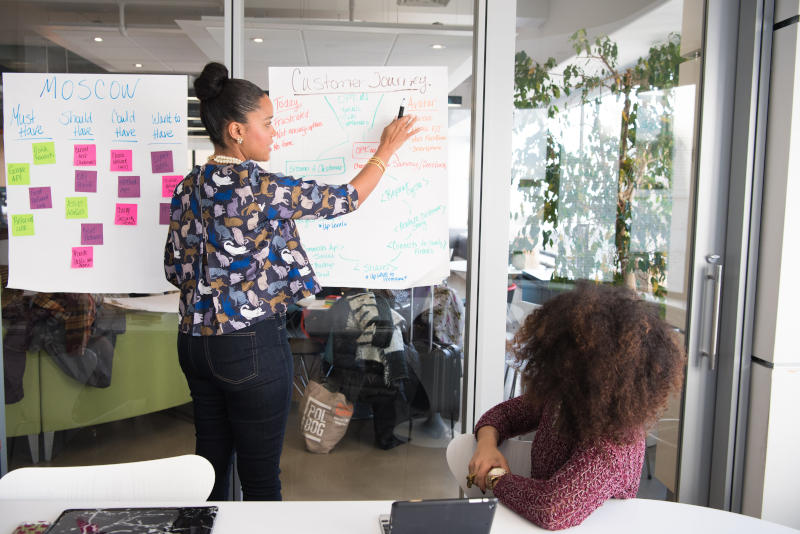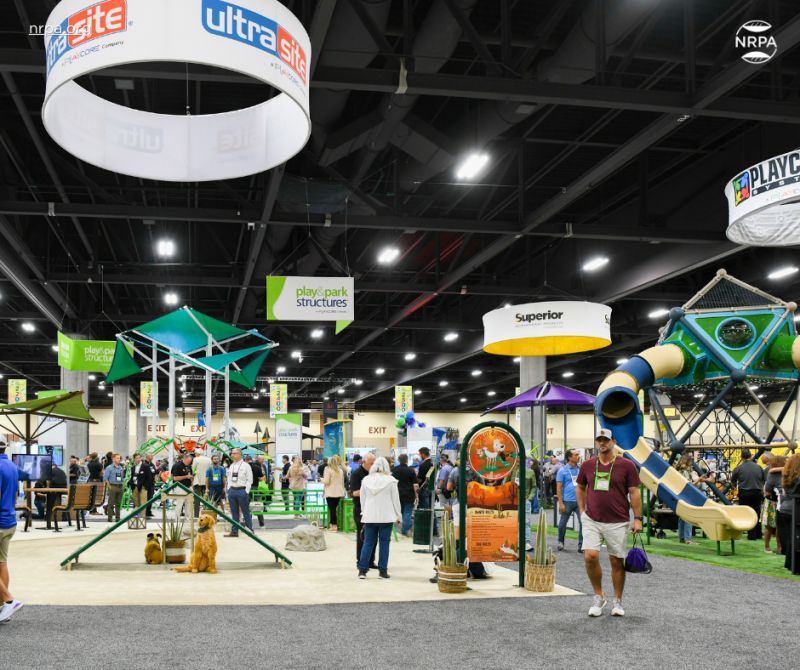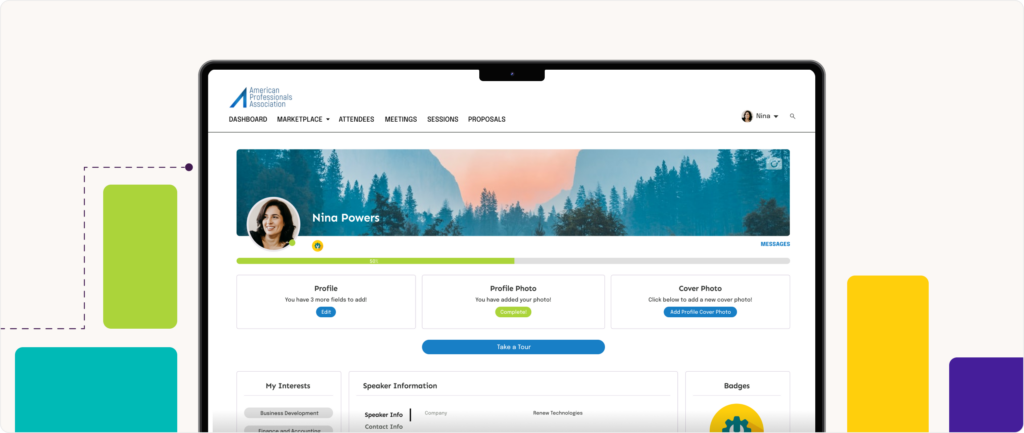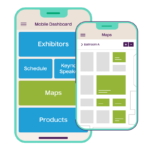When your event goes forward without a hitch, the benefits for your business can be far-reaching. But, a well-planned trade show or conference takes an enormous amount of effort to plan. Following event management best practices can help you excel in the role. Your preparations empower you to deliver a seamless, memorable experience for your attendees that will drive results for your business and your sponsors.
As you implement planning best practices, you can refine your preparation strategy, which will help you continue to improve your efforts and experience all that events can do for your organization.
We are going to walk you through the best practices that will help you improve your processes right away so you can make your upcoming event your best. You will improve your overall outcomes, reduce the stress associated with the planning process, and improve your event ROI. Let’s get started.
Tip 1. Start Planning Earlier Than You Think You Need To

Getting started earlier than you think will give you the space to consciously consider how you will approach the next step for maximum efficiency with minimum stress.
Why Early Planning Gives You a Competitive Advantage
Sitting down with your team and outlining your event plans will improve your entire organizational system. Earlier planning will give you a host of benefits, including:
- Reducing last-minute decisions. You will have time to think things through.
- Mitigating risk. A longer timeline helps you avoid acute risks associated with the calendar. You can build more cushion time.
- Enables creativity. When people don’t feel rushed to fulfill their planning responsibilities, they have more flexibility to think about creative features or solutions to incorporate.
- Improved budget management. When you plan your conference with plenty of time you will have the opportunity to track your budget more closely. Rather than having to settle for last minute vendors or options, you can carefully select the ones that fit your budget and your conference needs.
- Better negotiation leverage. As anyone who’s tried to manage a large event knows, leverage and negotiations can make a huge difference in the amount you pay for the same services. Planning your conference with plenty of time gives you more opportunities to shop around and negotiate your contracts with favorable terms.
- Improved schedule coordination. Start off your planning with plenty of time and finding times to meet with everyone on your team will be substantially easier. You will also be able to choose vendors that you want rather than just the ones you can accommodate your schedule.
Recommended Timelines for Trade Shows and Conferences
Now that you see some of the benefits of starting to plan earlier than you thought, let’s think about what that actually means in terms of the calendar. If you are planning a large-scale event, we recommend starting to look at major contracts and picking dates 9 to 12 months ahead of your activity date. If you’re planning a smaller regional event 6 to 9 months probably will suffice.
Some of the first milestones you want to take care of include looking for major vendors like your venue, identifying your keynote speakers, and planning your initial marketing campaigns. These elements will determine how you run through the rest of your planning milestones.
Tip 2. Define Clear Objectives and KPIs from Day One
Immediately establish clear objectives and your KPIs for the event. This will dictate how you run the rest of your planning process and how your team works together.
Aligning Internal and External Stakeholders on Goals
To get started working on your goals, you need to align internal and external stakeholder objectives. Lead kickoff meetings with the defined priority of setting these objectives. There are a variety of objectives you might decide to use for your event. For example, you might want to look at the leads you generate from your event, the sessions attended, the social engagement you achieve, brand mentions, and sales obtained after the end of the event. Work with the team to decide which ones will be the top priority and how you will measure them at the end of the event.
As you outline these goals for your team, you also want to identify expectations of everyone involved. Know what responsibilities each person will take care of and how those responsibilities fit with the proposed objectives of your event.
Examples of Measurable KPIs for Event Success
Determining your objectives helps you define the KPIs that you will use to evaluate your success. Here are some of the most common KPIs that event managers want to use.
- Registration numbers. Look at how many people sign up for the event and how that compares to past years.
- Attendance rates. What percentage of your registrants show up on the day of the event?
- Session ratings. How do people evaluate the sessions you held, and what types of impressions did they walk away with after the event?
- Cost per lead. How much money did your business have to invest, and how many leads did you get in return?
- Exhibitor ROI. Did your exhibitors achieve their objectives? Would they come back?
- Net promoter score. How many people would encourage others to attend your events moving forward?
Tip 3. Create a Detailed Event Management Checklist

As you move forward in the planning process, it helps to create an overall checklist that will guide your planning.
What to Include in a Comprehensive Event Planning Checklist
Your checklist will help you keep track of a variety of key categories that you want to cover as you plan your event. We recommend including planning items such as:
- Venues and venue logistics. This includes all the details related to your venue, parking, personnel, security, and logistics management.
- Tech and AV needs. Consider the equipment your presenters need to create enjoyable presentations throughout the event.
- Vendor deadlines. Your vendors will have deadlines for when you need to finalize your orders such as your food and catering needs. Have a list that helps you keep track of these deadlines.
- Marketing assets. The marketing team will run different campaigns in the months leading up to the event. Know the information they need, what assets they need to design, and what types of campaigns they will run at different milestones.
- Signage. You will also need signs for the event itself. These signs will tell people where to go and when what to do in an emergency. Know when you want the signs completed and what you want them to say.
- Contingency items. Organize what materials you will need for any contingency plans you have.
- Compliance. You need to keep your attendees safe and protect yourself legally. Know what liabilities and compliance regulations apply to your event.
Recommended Tools and Templates for Efficiency
Tools and templates can help you collaborate with your team members, update the status of planning components and have a central place for all your planning. Many event-planning tools, like A2Z Events, offer features that can help you organize the different event components. Project management platforms like Asana can also be helpful for tracking different project components.
Many teams also find it helpful to create common templates or tables in programs like Google Docs so that everyone can edit and update the plans based on their progress.
Tip 4. Choose the Right Vendors and Partners
The vendors you choose will have a critical impact on the success of your event. Let’s look at how you can create an optimal vendor list for your upcoming event.
How to Vet Vendors Before Your Commit
As you evaluate your vendors it helps to ask some key questions. They’ll help you gauge their experience and their ability to provide the services that you’re envisioning for your attendees. Here are some good questions to get started with.
- Have you ever worked on a similar event to the one we’re planning? How did it go? Do you have any references we can speak with?
- What are your contingency plans? Do you have backups in case something goes wrong? Have you ever had something not work as planned during an event? What did you do?
- What type of support do you provide for your vendors on site and for your clients during the planning process? Who will we speak with while we plan our event? How are they involved in the rest of the vendor services?
Best Practices for Managing Vendor Relationships On-Site
During the event itself, you will need a plan for organizing and communicating with your vendors.
This keeps everyone organized and will help you to deal with any issues as they arise.
Before the event, do a walk-through with your vendors. Make sure they know where they will go and the space they can use.
When the big day arrives, set up a vendor command center. Team members responsible for managing vendors should have a central place where they can communicate and where vendors can find them .
To organize your communication, prioritize also how you will organize contact lists and real-time communication. For example, you might designate a specific person to take calls from particular vendors or designate one person to be in charge of managing particular types of issues. You will also want to establish a real-time channel for everyone to connect. Radios or apps like Slack or WhatsApp both work well in this respect.
Tip 5. Prioritize Attendee Experience at Every Touchpoint

As you move through the planning process, make sure you center attendee experiences at every step of development.
Designing a Seamless Experience from Registration to Post-Event
From the first interaction people have with your event, you want to make sure they have positive experiences. Creating an intuitive registration system that lets people easily register and collect any important information about the event, and without a labor-intensive registration process, will be key.
During the event itself, creating helpful signage to guide people will help them navigate. Using mobile apps to connect attendees and provide real-time information, as well as personalized event agendas, can all help people feel more connected and engaged. You can then use these apps for post-event content delivery to keep people interested.
Accessibility and Inclusion in Modern Event Planning
As you organize all the details of your event, consider also how you can make the event more inclusive.
- Go beyond ADA requirements. Have content on your app optimized for screen readers, offer sign-language interpreters, and consider the convenience of the mobility-impaired when planning your layout and itinerary.
- Remember the prevalence of dietary restrictions and offer menu items that can accommodate a range of religious, allergy, and preference dietary restrictions. For example, this might include gluten-free options and vegetarian options for those who do not eat meat or only eat meat prepared according to religious restrictions.
- Create a welcoming environment for all demographics. If your audience includes many people with a primary language other than English, reflect this need in your signs and apps. Remember your diverse crowd and the desire to be welcoming as you create imagery for marketing and event materials.
Tip 6. Master the Art of On-Site Logistics
When people arrive at the site for the event itself, prioritizing on-site logistics will go a long way in helping everything run smoothly. Here are some strategies to make that happen.
Layout, Flow, and Crowd Management Tips
Designing a layout for your event goes beyond just thinking about what breakout sessions you want to place in different areas. You also need to consider traffic and flow between the different areas. We recommend planning for the following details:
- Design a floor plan that takes into account natural traffic flow. Know the direction people will go at different points.
- Note traffic choke points and how you can minimize them, such as signs, alternate routes, or staggered traffic times.
- Signage placement. Know where to place the signs to maximize their benefits.
- Have a plan in place to manage traffic during peak movement times, such as registration, lunch, and keynotes. Have staff on hand to help people keep moving and avoid clogging up the hallways. Make sure the high-traffic areas are clear to allow for maximum movement.
Emergency Planning and Real-Time Coordination
Although you plan to organize an amazing time for your attendees, you also need to have a plan in case something goes wrong and you have an emergency. Know who on your team will have what responsibilities in case of problems such as:
- Medical emergencies. Having first aid equipment, knowing who will call for help, and where you will organize the rest of the attendees are all critical.
- Evacuations. Have a clear evacuation route and a plan for keeping people safe.
- Weather issues. If you experience severe weather and it threatens to snow people in or knock out the power, have a plan in place for holding the best event you can, or rescheduling if need be.
As you design these plans, include the important step of briefing your staff and volunteers on each of these protocols before the event starts. Make sure everyone knows what to do and who to call if they have a question.
Tip 7. Leverage Technology to Streamline Event Management

Technology can help streamline your successful event by bringing all the different planning components together.
Event Tech Tools Every Professional Should Know
There are a variety of tech tools on the market currently that businesses can use to organize registrations, event planning, and improve event management.
A2Z Events leads the industry as a complete event management tool that helps with steps from layout design to badge printing.
Cvent offers a number of helpful tools for large events, including the capacity to manage more than one event at a time.
Eventbrite is another valuable tool, especially for those hosting smaller events. While it doesn’t have as many capabilities, it is easy to use for those new to the industry.
How to Use Automation and Data to Improve Planning
As you implement your planning tools, consider how automation and data can help you maximize your planning and marketing strategies. Automating reminders for those who have expressed interest can ensure no one accidentally forgets.
Similarly, dynamic agendas can automatically generate helpful information for attendees so they can maximize their experiences.
Once the event finishes, automation can deliver important surveys to your attendees on time, so you get their impressions of your event and can collect critical data.
Finally, real-time attendance dashboards can help you instantly see where your attendees are flocking and how engaged people are during different components of the event.
Tip 8. Promote Your Event Strategically Across Multiple Channels
Getting the word out about your upcoming event or trade show will bring in your registrations and empower you to launch the event you want to see.
Building a Pre-Event Marketing Timeline
To encourage registrations, you will need to set up a full marketing timeline. Note what will happen 12 weeks, 8 weeks, 4 weeks, and 2 weeks before the start date. For example, you might:
- Launch early bird emails 12 weeks before the start date.
- Send out speaker spotlights and teaser content at the 8-week and 4-week marks.
- Send out campaigns to target last-minute registrants 2 weeks before the event.
Using Social Media, Email, and Partnerships to Drive Attendance
Creating effective marketing campaigns calls for you to employ a range of strategies across different platforms to maximize your reach.
On social media, incorporate both paid and organic campaigns. Paid campaigns allow you to target people based on particular demographics. Organic promotions arise when you start conversations about your event and encourage other people to ask questions or otherwise engage with the content. This amplifies the material so more people see it.
Email sequences can then drop emails to interested parties based on their important information, such as their persona and pain points. Tailor the content based on their needs and have the emails go out every few weeks until they register or the event arrives.
Influencer and partner promotions can also encourage more registration. Influencers who already hold people’s attention in your targeted audience can encourage them to sign up.
Countdown campaigns can tap into people’s fear of missing out and create a sense of urgency by letting people know to buy tickets before they sell out, the price goes up, or they miss their opportunity.
Tip 9. Build a Crisis Management and Contingency Plan
Your crisis management and contingency plan will allow your business to pivot if you have a significant problem emerge.
How to Conduct a Risk Assessment
A risk assessment will organize and prioritize all the different risks that might occur. These potential problems can vary widely, from audio equipment failures to severe weather. You will want to include factors such as:
- Severe weather
- Technology failures
- Speaker cancelations
- Venue or vendor issues
- Protests or other security events
- Emergencies or evacuations
Once you have your list of potential risks, you can rank these risks based on their likelihood and the impact they would have on the event. For example, would your event still continue but need modifications? Would those modifications be significant or minor? This will help you prioritize your risks and determine where you need to focus your contingency plans.
Communication Protocols for Emergencies or Disruptions
Balancing your risk assessment also requires establishing protocols for emergencies and other disruptions within your team. Everyone needs a way to contact each other, and there should be a point person who will take the lead if a problem arises.
Create internal response plans that include:
- Who will be in charge of communicating with attendees and how they will do so? This might vary depending on when and what type of disruption occurs and might include emails or using an event app.
- Who will manage the implementation of any emergency plans?
- Who will inform the event leadership of major developments and the implementation of any contingency plans?
Tip 10. Conduct a Thorough Post-Event Evaluation
Once the event wraps up, you will come to one of the most important steps in the process. Now you will tend to conduct a careful post-event evaluation. This will tell you how your event met the various goals you set back in the beginning and where you can improve your event moving forward.
Collecting Feedback with Purpose
To collect valuable data, you need well-constructed surveys that will gather the data you need. To construct these surveys, follow these best practices:
- Keep the surveys short. This improves the likelihood of people finishing the entire questionnaire.
- Use a mix of multiple choice questions, ranking questions, and open-ended questions, using the writing questions sparingly since they are more time-intensive for your attendees.
- Ask people questions about the value they received, their impressions of different event aspects, and their likelihood of returning for future events.
- Ask targeted questions to your event sponsors and exhibitors so you can evaluate their ROI.
Once you collect the surveys, use tools to help you analyze the multiple choice and ranking questions. These questions will give you concrete statistics. You can then use qualitative tools to evaluate the open-ended questions, looking for patterns in answers and keywords that help you evaluate positive and negative sentiment.
Combine the data from these questions with your attendee engagement metrics. This will give you a more complete picture of how your audience interacted with the event and the impression they left with.
Turning Data into Actionable Improvements
Once your surveys have been collected and analyzed, meet with your team to consider how the results fit with your event planning process. Explore how well your event met your key objectives from the beginning by discussing the results for your targeted KPIs.
Use audience feedback to also determine where your events need improvements in the future. You might consider opportunities such as:
- Program changes
- Vendor updates
- Layout adjustments
- Marketing changes
This insight will help you begin the journey towards your next event with more information and guidance so you can continue to improve your events and achieve your business goals.
Conclusion
Continually refining your event management best practices can help you continually improve your events and bring in more ROI for your business. As you plan your events, evaluate your current approach and see which of these strategies you can adopt for better implementation. Always look for ways to improve so you experience long-term growth.










